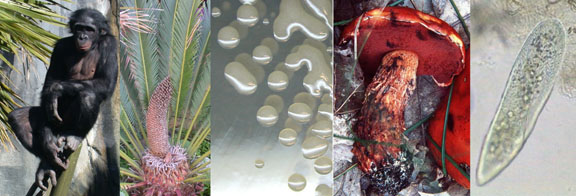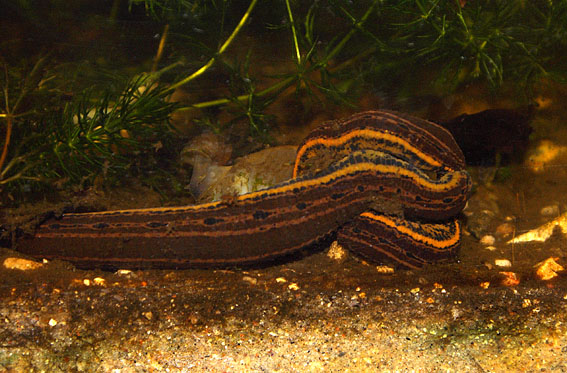It's a boy! Oh wait, its a girl! No, its BOTH!
 Hirudo medicinalis
is hermaphroditic, meaning it has both
male and female sex organs that produce male and female gametes. There
is a common misconception that hermaphroditic animals can fertilize
their own eggs, but in most cases, species do not self-fertilize. For
most, it is physically impossible due to the positioning of their sex
organs. So what are some benefits of hermaphrodism? Let's say that you
were an organism that occupied an area with few organisms of your own
species. If you were a male, you would have to worry about finding a
female to reproduce, and visa versa. Hermaphrodism takes the worry out
of that possible issue. If you found another member of your species,
you could cross fertilize and the BOTH of you can reproduce, making it
more likely to perpetuate the species.
Hirudo medicinalis
is hermaphroditic, meaning it has both
male and female sex organs that produce male and female gametes. There
is a common misconception that hermaphroditic animals can fertilize
their own eggs, but in most cases, species do not self-fertilize. For
most, it is physically impossible due to the positioning of their sex
organs. So what are some benefits of hermaphrodism? Let's say that you
were an organism that occupied an area with few organisms of your own
species. If you were a male, you would have to worry about finding a
female to reproduce, and visa versa. Hermaphrodism takes the worry out
of that possible issue. If you found another member of your species,
you could cross fertilize and the BOTH of you can reproduce, making it
more likely to perpetuate the species.
Two leeches
presumably mating. Photo
courtesy of Lars L. Iverson
Talk
about differentReproduction in leeches is, well, weird to say the least and the exact details of this process is still a little sketchy. During mating season, which typically runs through early June to August, leeches of reproductive maturity start producing sperm and eggs. The clitellum (band of tissues that secretes the cocoon) may become enlarged and visible during this time of year. When two leeches find one another and decide to mate, they line up with each other, and one will attach a sac filled with sperm (called a spermatophore) to the other. The sperm are then released from the sac and literally pierce through the skin of the leech, eventually finding its way to the ovaries. When the sperm finally find their way to the egg and fertilize it, the leech begins to make a cocoon by secreting thick fluids from the clitellum. The eggs are then inserted in the cocoon and the leech finds a good place to put it. Many biologists are surprised by what most types of leeches do after the cocoon is made. Since it can take several days for the cocoon to harden, some leeches actually cover it with their bodies to protect it from predators and the environment. Other species of leech will actually wait until the eggs hatch and then transport their babies to their first meal. Most people are surprised to hear that these blood sucking parasites are in fact good mothers!
Click HERE to learn about how Hirudo medicinalis is used in medicine
| Click on the link below to visit the University of La Crosse website | Click on the link below to see other organism websites made by UW-L students at multipleorganisms.net |
 |
 |
